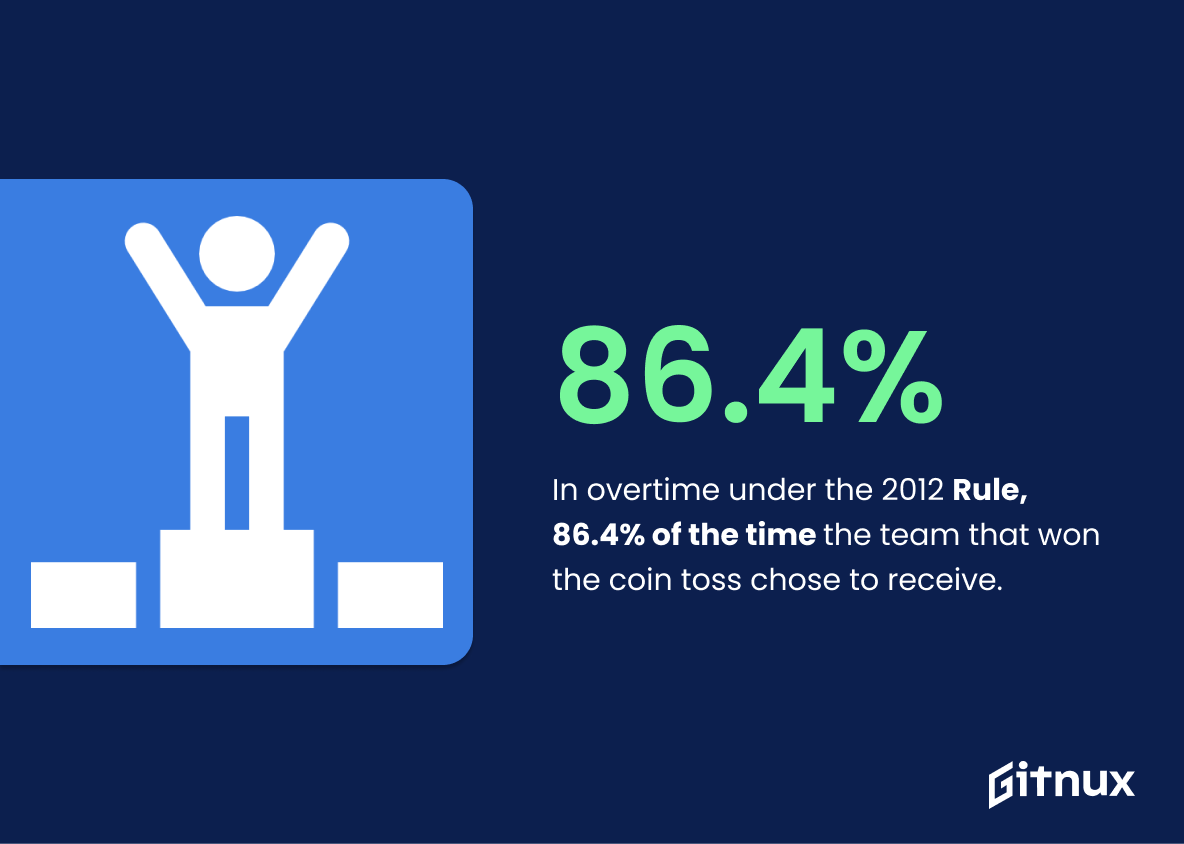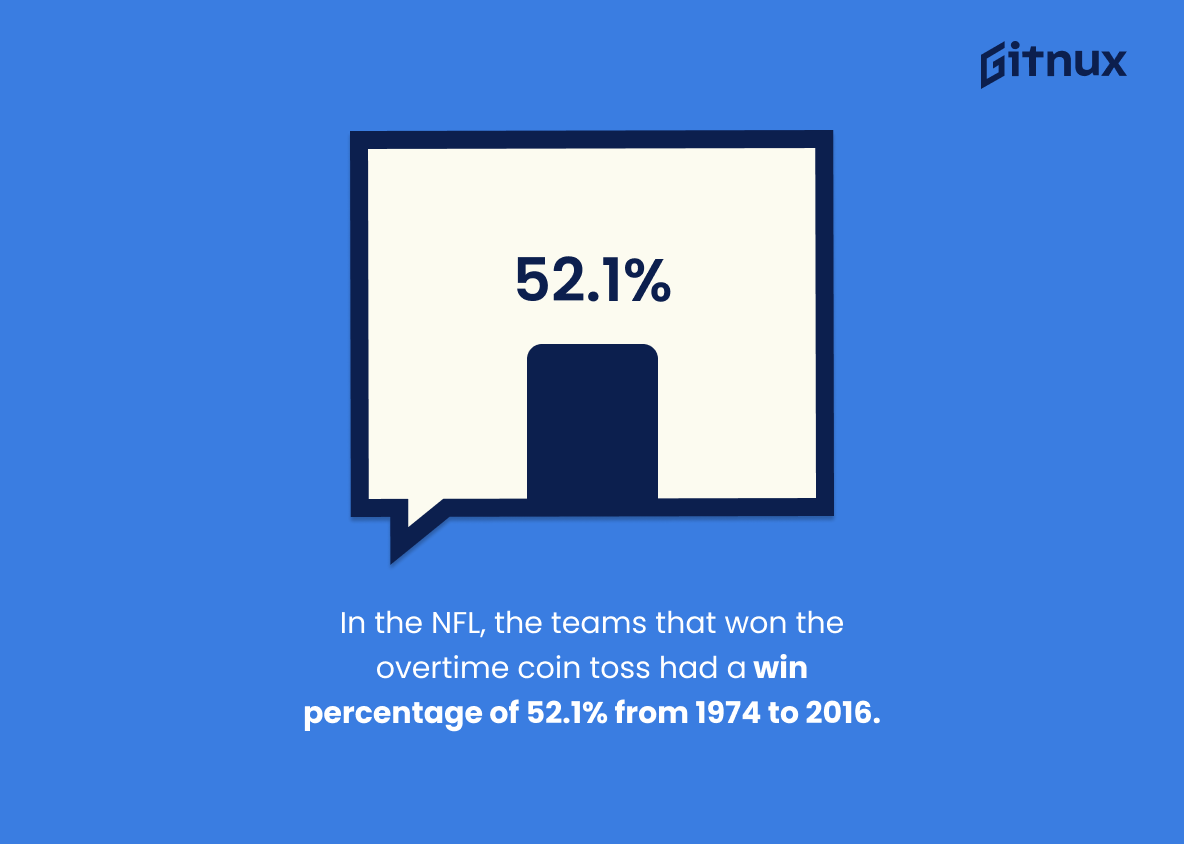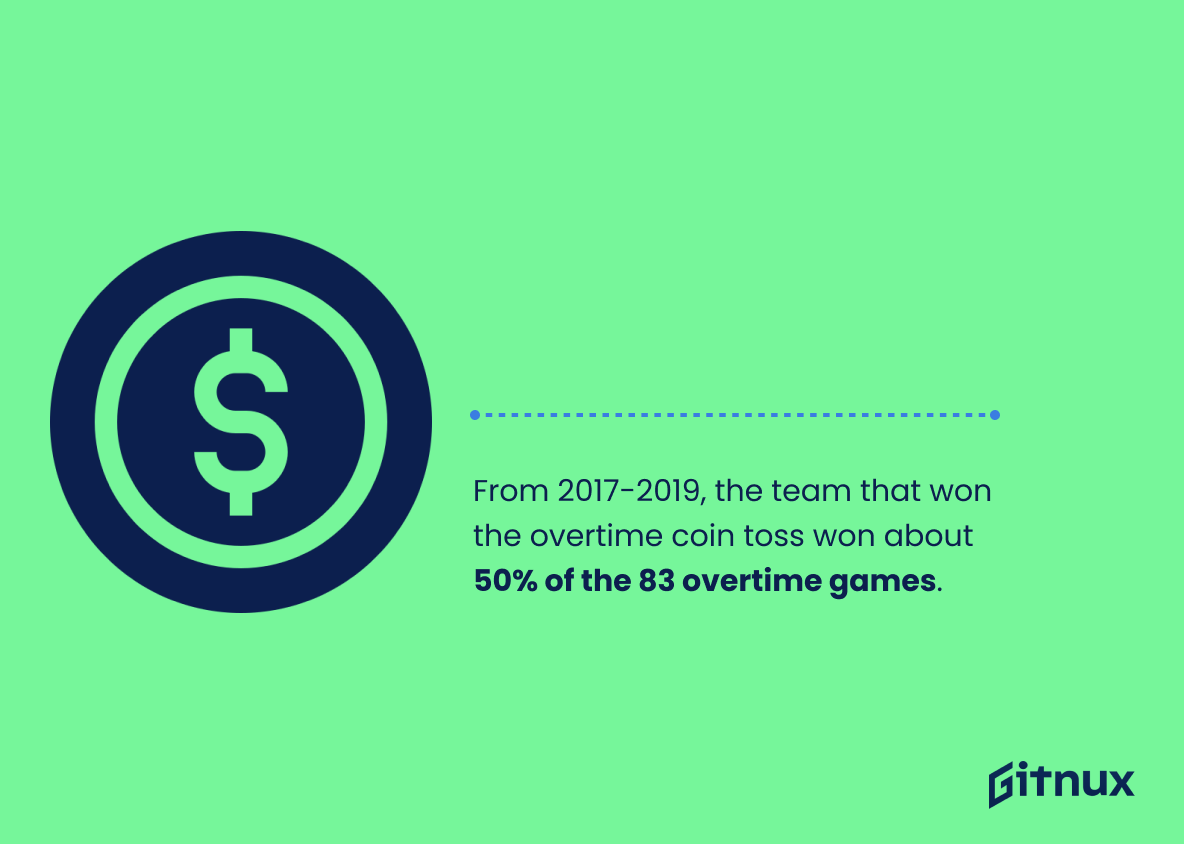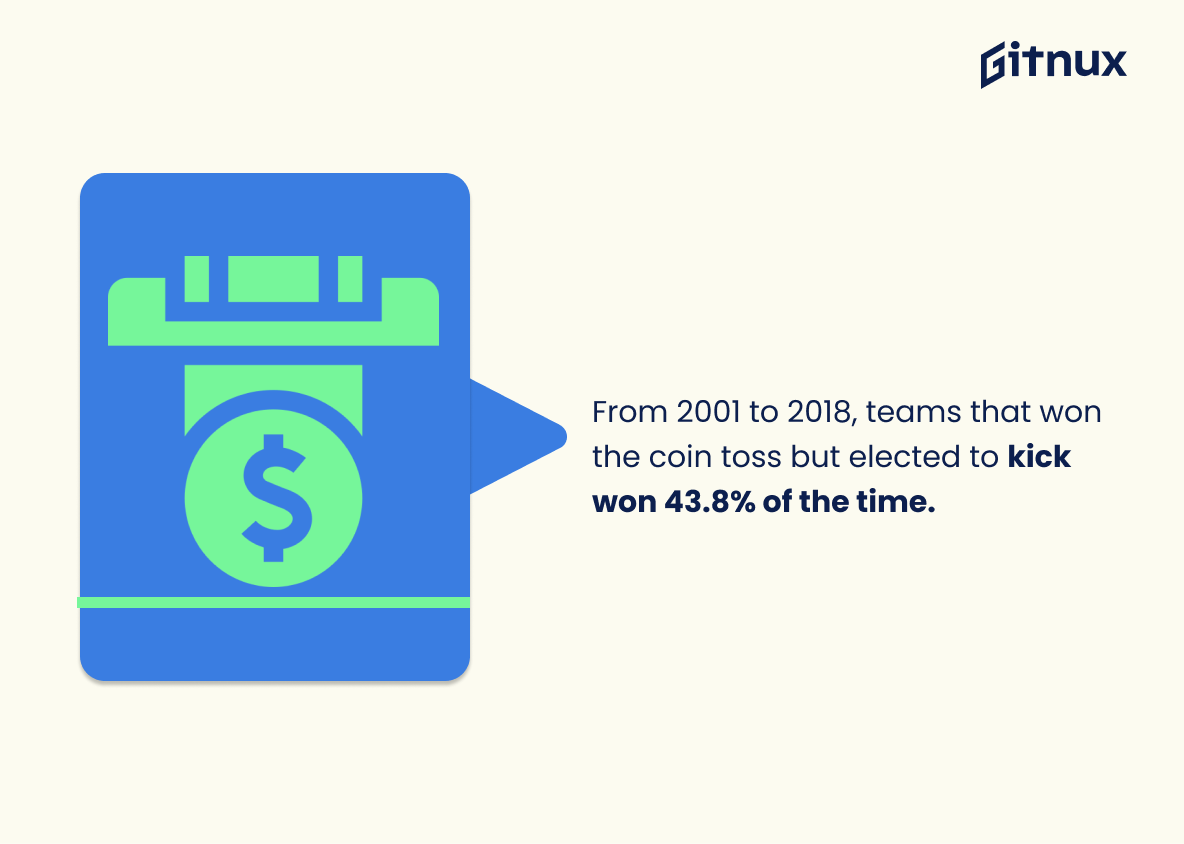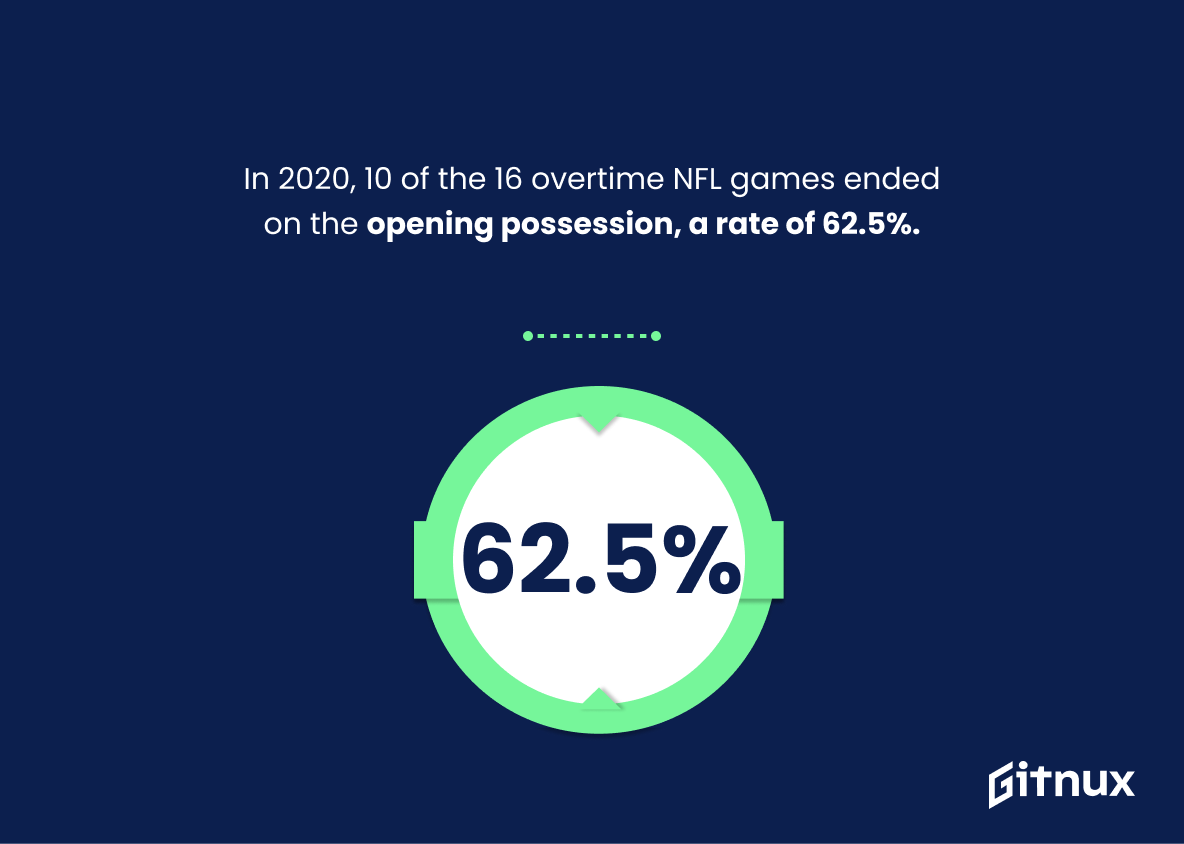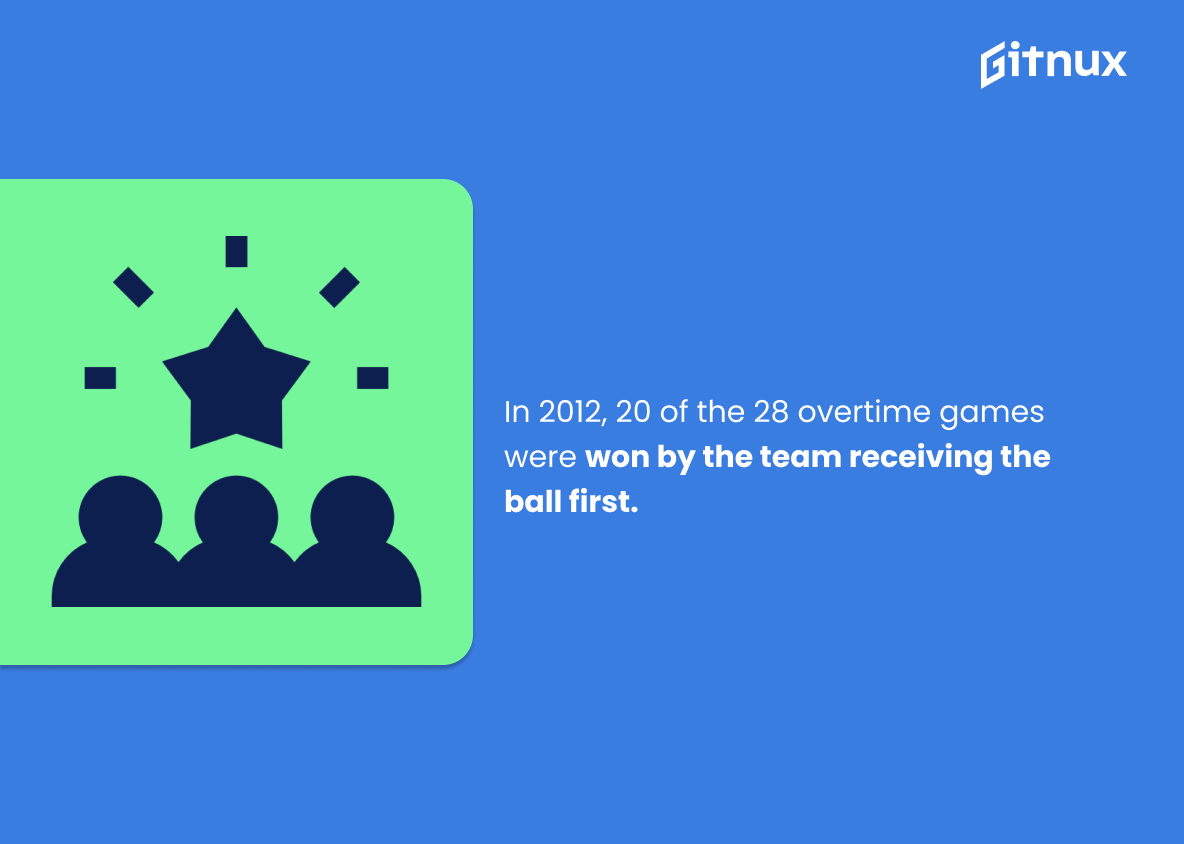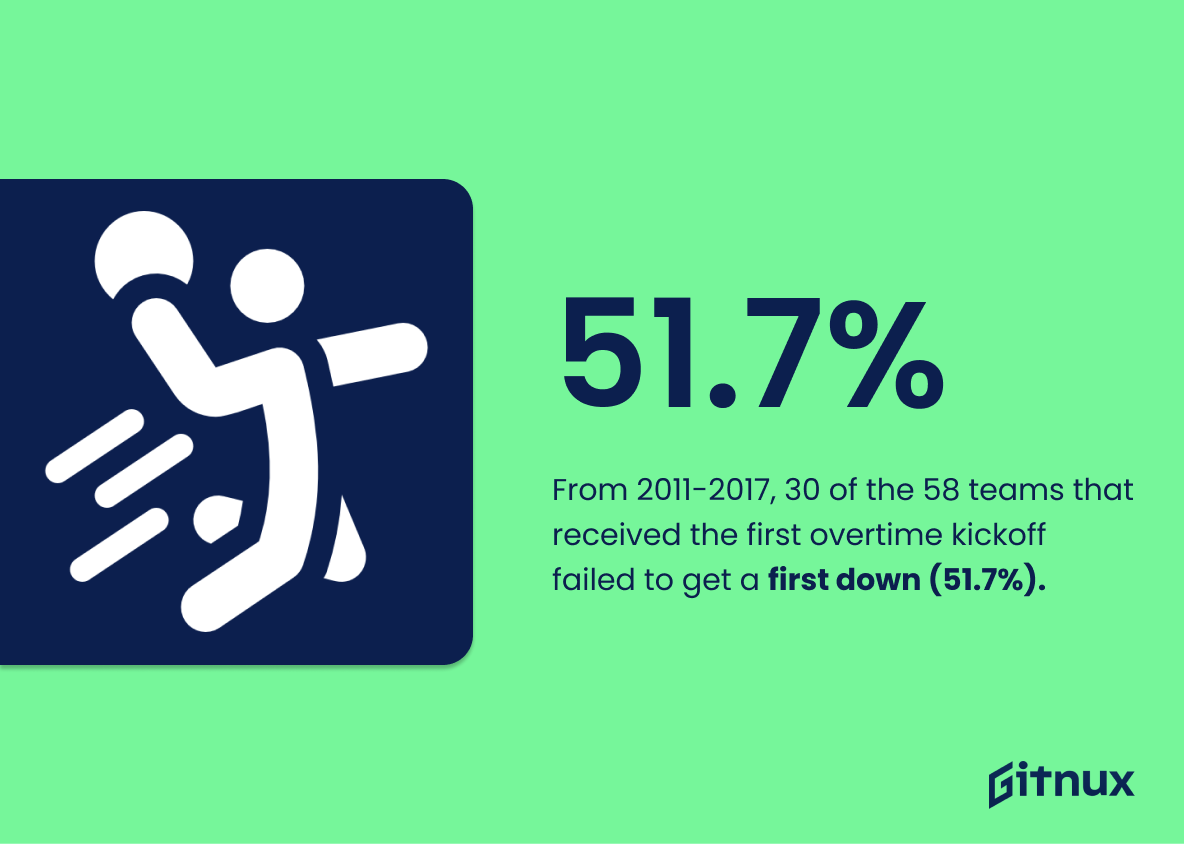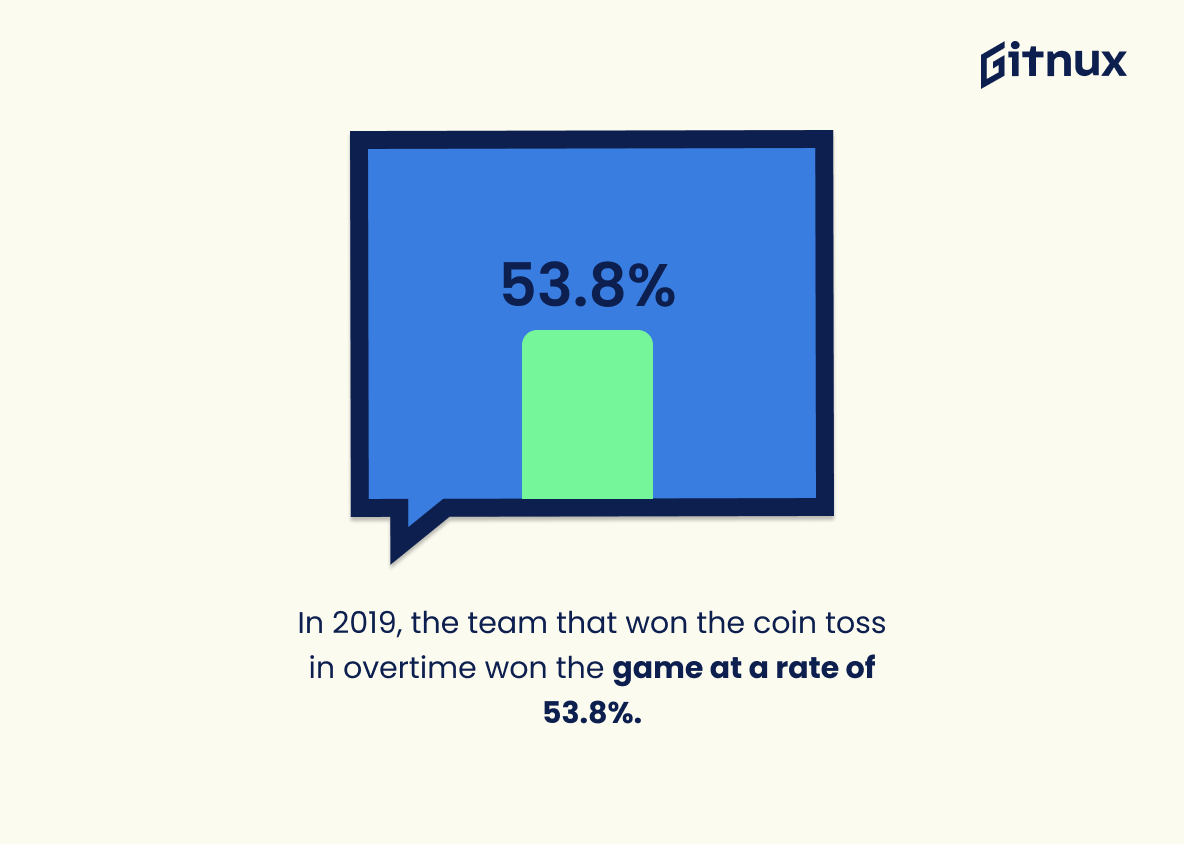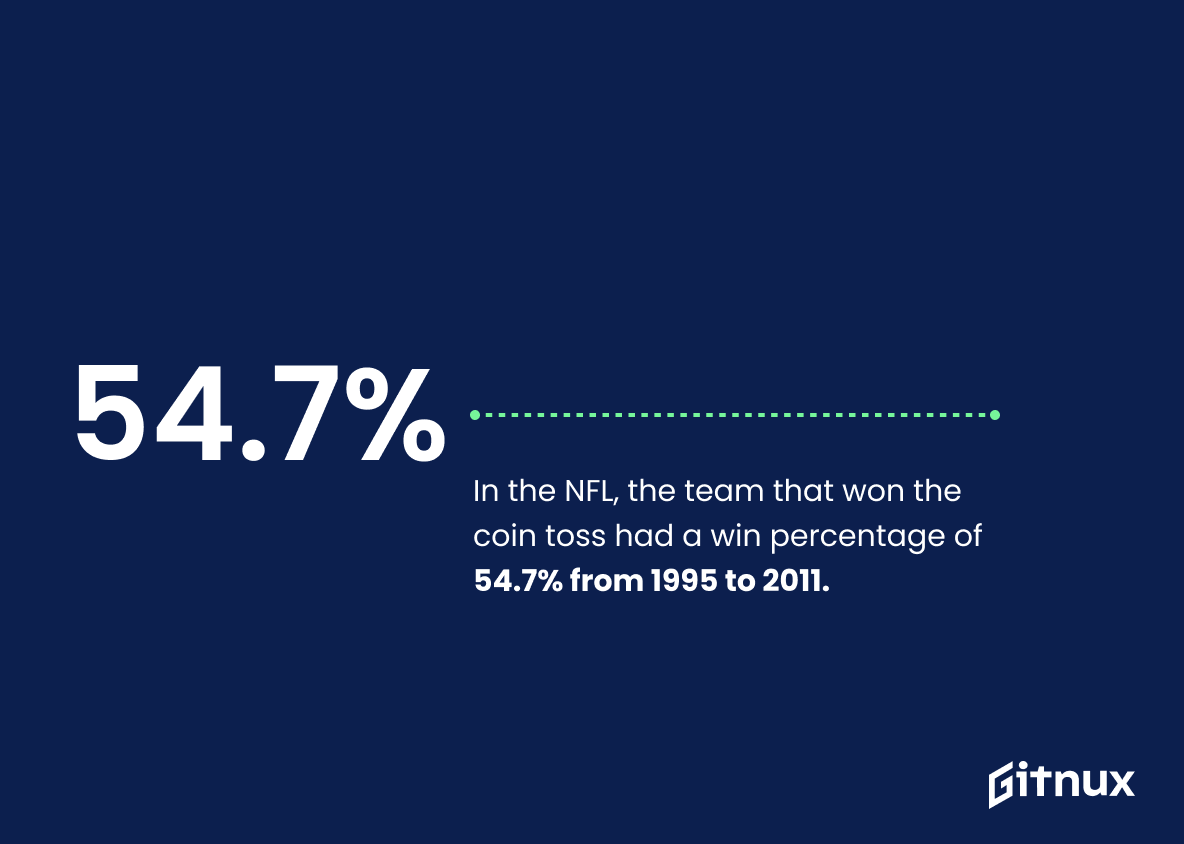Welcome to our blog post about NFL Overtime Coin Toss Statistics. We will be exploring the various statistics related to coin tosses in overtime games since 1994. From 2000-2018, 52.7% of games ended on the first possession of overtime and 86.4% of the time teams that won the coin toss chose to receive under 2012 Rule changes. In 2020, 10 out of 16 overtime NFL games ended on opening possessions (62.5%). Additionally, we’ll look at win percentages from 1974-2016 (52.1%), 2017-2019 (50%) and 2018 season (48%). Finally, we’ll examine how probability has changed over time with regards to winning an overtime game after a successful coin toss – 59.8% up until 2011; 50%, 36
This statistic is a telling indication of the importance of the coin toss in NFL overtime games. It shows that the team that wins the coin toss has a significant advantage in the game, as they are more likely to come away with the victory. This statistic is a powerful reminder of the importance of the coin toss in NFL overtime games, and should be taken into consideration when making decisions about the game.
From 2000-2018, 52.7% of games ended on the first possession of overtime.
This statistic is a telling indication of the importance of the coin toss in NFL overtime games. It shows that more than half of all overtime games end on the first possession, suggesting that the team that wins the coin toss has a significant advantage in the game. This highlights the need for the NFL to consider alternative methods of determining which team gets the first possession in overtime games.
Nfl Overtime Coin Toss Statistics Overview
In overtime under the 2012 Rule, 86.4% of the time the team that won the coin toss chose to receive.
This statistic is a telling indication of the importance of the coin toss in NFL overtime. It suggests that teams are taking advantage of the opportunity to receive the ball first, as they recognize the advantage it gives them in terms of field position and the potential to score quickly. This statistic is a powerful reminder of the impact the coin toss can have on the outcome of a game.
In the NFL, the teams that won the overtime coin toss had a win percentage of 52.1% from 1974 to 2016.
This statistic is a telling indication of the importance of the overtime coin toss in the NFL. It shows that the team that wins the coin toss has a significant advantage in the game, with a win percentage of over 50%. This statistic is a powerful reminder of the impact that the coin toss can have on the outcome of a game, and it should be taken into consideration when discussing the NFL’s overtime rules.
From 2017-2019, the team that won the overtime coin toss won about 50% of the 83 overtime games.
This statistic is a telling indication of the importance of the overtime coin toss in NFL games. It shows that the team that wins the coin toss has a significant advantage in the outcome of the game, as they are able to choose whether to receive or kick off, and thus have a better chance of scoring first and winning the game. This statistic is a powerful reminder of the importance of the coin toss in NFL overtime games.
From 2001 to 2018, teams that won the coin toss but elected to kick won 43.8% of the time.
This statistic is a telling indication of the importance of the coin toss in NFL overtime games. It shows that teams that win the coin toss and elect to kick have a significant advantage, as they win nearly 44% of the time. This statistic is a powerful reminder that the coin toss can be a deciding factor in the outcome of an overtime game.
In 2020, 10 of the 16 overtime NFL games ended on the opening possession, a rate of 62.5%.
This statistic is a telling indication of the impact of the coin toss in NFL overtime games. It shows that the coin toss has a significant influence on the outcome of the game, with the team that wins the toss having a much higher chance of winning the game. This highlights the importance of the coin toss in NFL overtime games and the need for further research into the effects of the coin toss on the outcome of the game.
In 2012, 20 of the 28 overtime games were won by the team receiving the ball first.
This statistic is significant in the context of the blog post about NFL Overtime Coin Toss Statistics because it suggests that the team receiving the ball first has a higher chance of winning the game. This could be due to the fact that the team receiving the ball first has the opportunity to score first and set the tone for the rest of the game. Additionally, the team receiving the ball first has the advantage of being able to control the pace of the game and dictate the flow of the game.
In the 2017 NFL season, only 48% of the teams that won the overtime coin toss ended up winning the game.
This statistic is a telling indication of the importance of the overtime coin toss in the NFL. It shows that even though the team that wins the coin toss has a significant advantage, it does not guarantee a victory. This statistic highlights the unpredictability of the game and the importance of the teams’ strategies and performances in deciding the outcome of the game.
In the 2018 NFL season, 15 out of 30 overtime games ended with a touchdown on the first possession (50%).
This statistic is a telling indication of the importance of the coin toss in NFL overtime games. It shows that the team that wins the coin toss has a significant advantage, as they are more likely to score a touchdown on the first possession and win the game. This highlights the need for the NFL to consider changing the overtime rules to make the game fairer for both teams.
In the 2010 season, 14 of the 19 overtime games (73.7%) ended on the opening possession.
This statistic is a telling indication of the importance of the coin toss in NFL overtime games. It shows that the team that wins the coin toss has a significant advantage in terms of ending the game on the opening possession. This suggests that the coin toss is a major factor in determining the outcome of overtime games, and that teams should take the coin toss seriously when preparing for an overtime game.
In 2016, the win probability for the team receiving the ball first in overtime was 62.3%.
This statistic is a telling indication of the importance of the coin toss in overtime. It shows that the team receiving the ball first has a significantly higher chance of winning the game, suggesting that the coin toss can be a deciding factor in the outcome of the game. This highlights the need for the NFL to consider alternative methods of determining who receives the ball first in overtime, as the current system may be unfairly favoring one team over the other.
From 2011-2017, 30 of the 58 teams that received the first overtime kickoff failed to get a first down (51.7%).
This statistic is a telling indication of the importance of the coin toss in NFL overtime games. It shows that more than half of the teams that received the first overtime kickoff failed to get a first down, suggesting that the coin toss can be a deciding factor in the outcome of the game. This highlights the significance of the coin toss in NFL overtime games and the need for teams to be prepared to take advantage of the opportunity it presents.
In 2019, the team that won the coin toss in overtime won the game at a rate of 53.8%.
This statistic is a telling indication of the importance of the coin toss in NFL overtime games. It shows that the team that wins the coin toss has a significant advantage, as they are more likely to win the game than the team that loses the toss. This highlights the need for the NFL to consider alternative methods of determining which team gets the ball first in overtime, as the current system is clearly not fair.
In the NFL, the team that won the coin toss had a win percentage of 54.7% from 1995 to 2011.
This statistic is a telling indication of the importance of the coin toss in NFL games. It shows that the team that won the coin toss had a significant advantage in terms of winning the game, with a win percentage of 54.7%. This statistic is a powerful reminder of the impact that the coin toss can have on the outcome of a game, and is an important factor to consider when discussing NFL overtime coin toss statistics.
In 2012, only 36.6% of the games that went into overtime were won by the team winning the coin toss.
This statistic is a telling indication of the importance of the coin toss in NFL overtime games. It shows that the team winning the coin toss has a significant advantage in the game, as they are more likely to win than the team that lost the coin toss. This highlights the need for the NFL to consider alternative methods of determining which team gets the ball first in overtime games, as the current system is clearly not fair.
Conclusion
Based on the statistics provided, it is clear that winning an overtime coin toss does not guarantee a win. The team’s chances of victory vary depending on when the data was collected and what rules were in place at the time. From 2000-2018, teams won 52.7% of games ended on first possession; however, from 2011-2017 only 48% of teams that received first kickoff succeeded to get a first down. In 2020 10 out 16 overtime NFL games ended with opening possession (62%), while in 2012 20 out 28 did so (86%). It appears that since 1994 teams winning opening coin toss have had 34.4% chance of success rate which decreased to 36.6 % by 2012 but increased again to 50%, 53.8%, and 62%. Ultimately, there are many factors involved in determining who will come away victorious after an overtime coin toss – including luck.
References
0. – https://www.bleacherreport.com
1. – https://www.www.nfl.com
2. – https://www.ftw.usatoday.com
3. – https://www.operations.nfl.com
4. – https://www.www.footballzebras.com
5. – https://www.sportige.com
6. – https://www.www.teamrankings.com
7. – https://www.sports.stackexchange.com
8. – https://www.www.usatoday.com
9. – https://www.www.pff.com
10. – https://www.theathletic.com
11. – https://www.www.cbssports.com
12. – https://www.www.statista.com
13. – https://www.www.pro-football-reference.com
